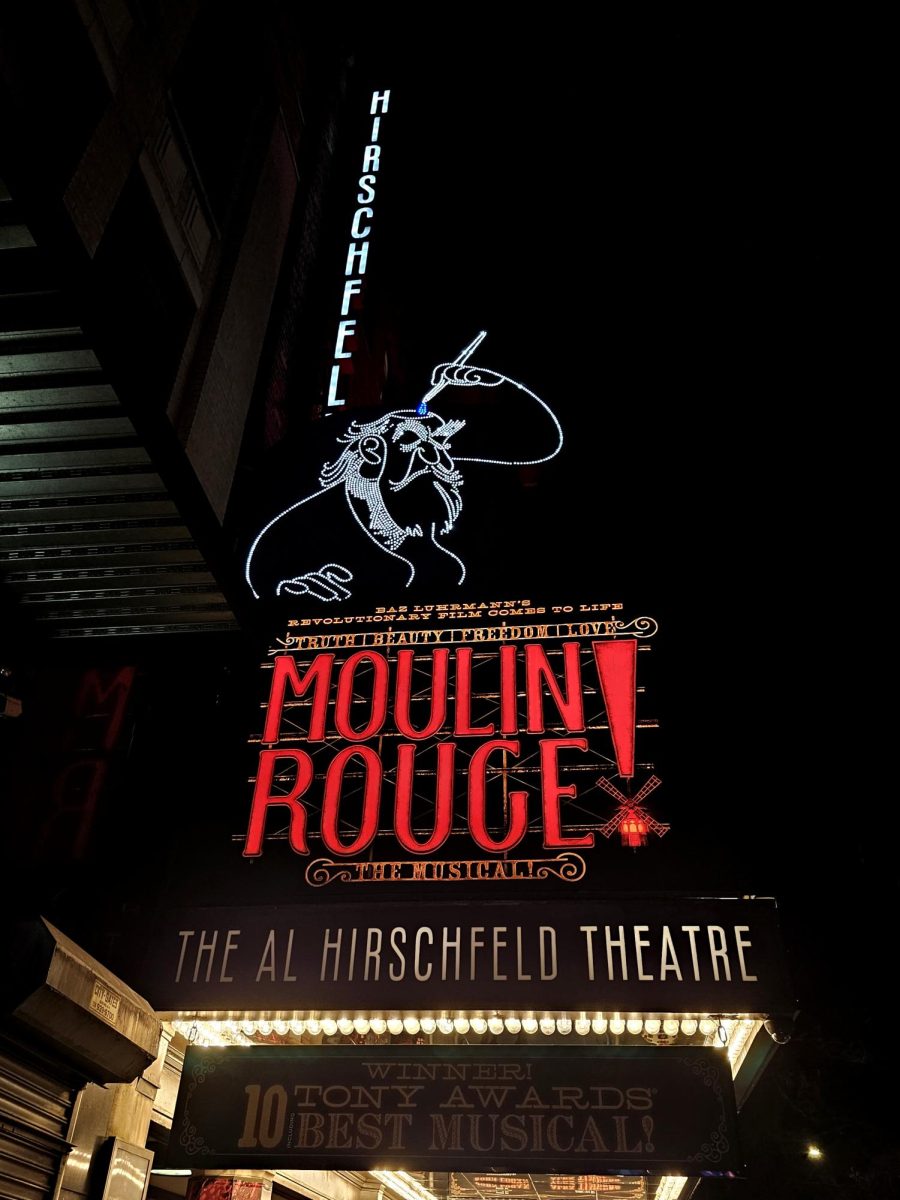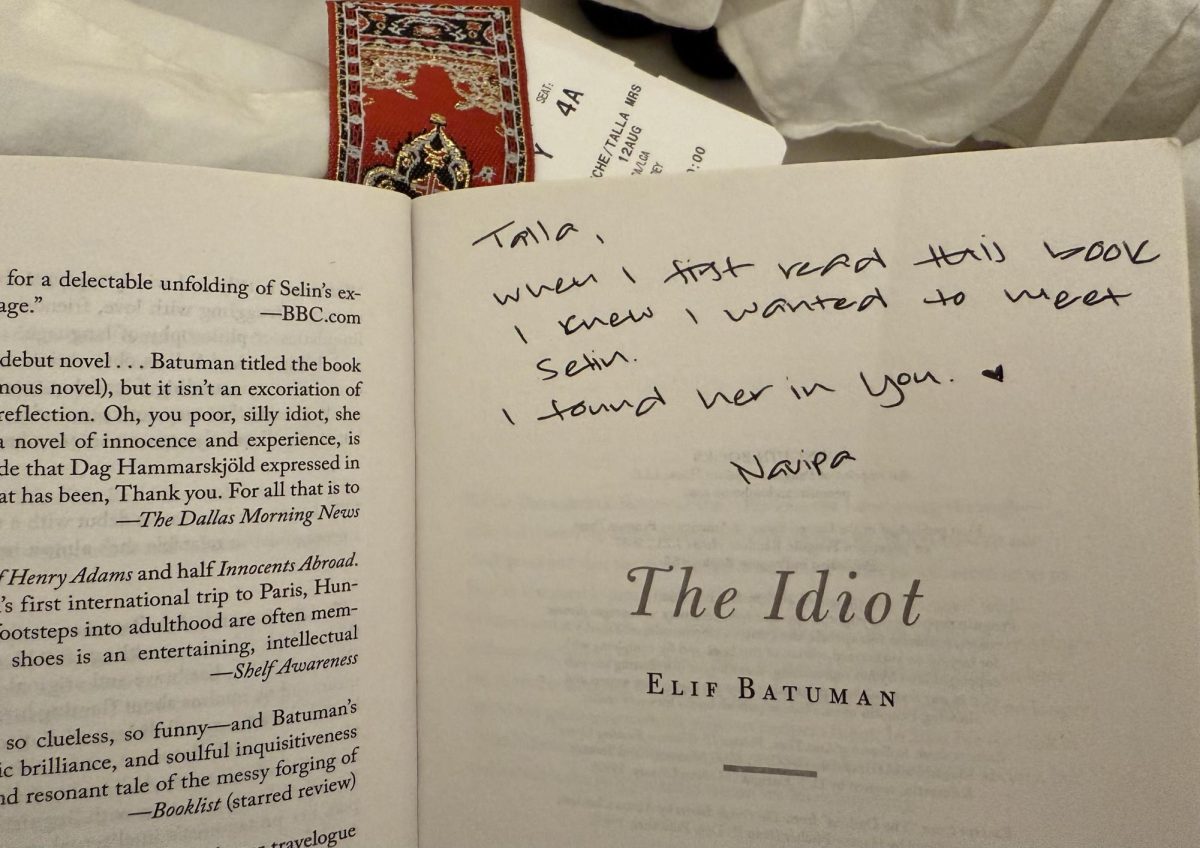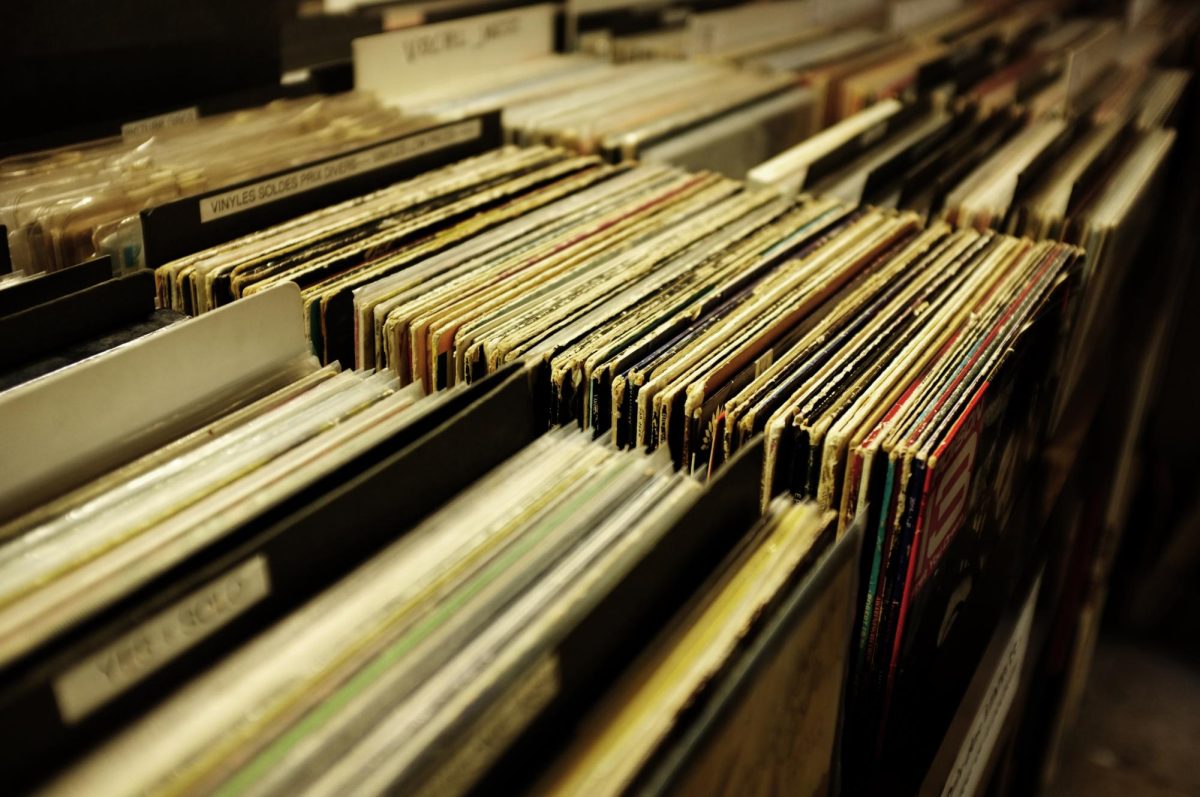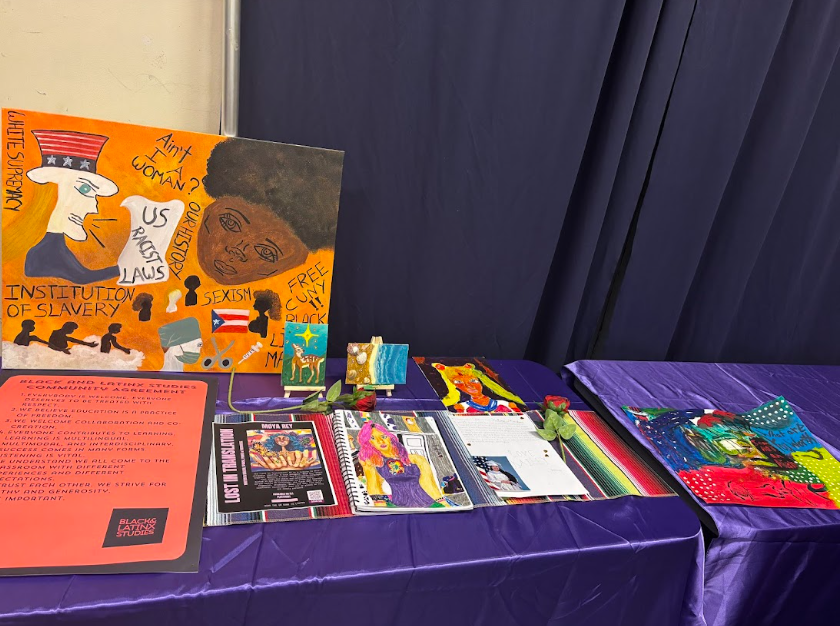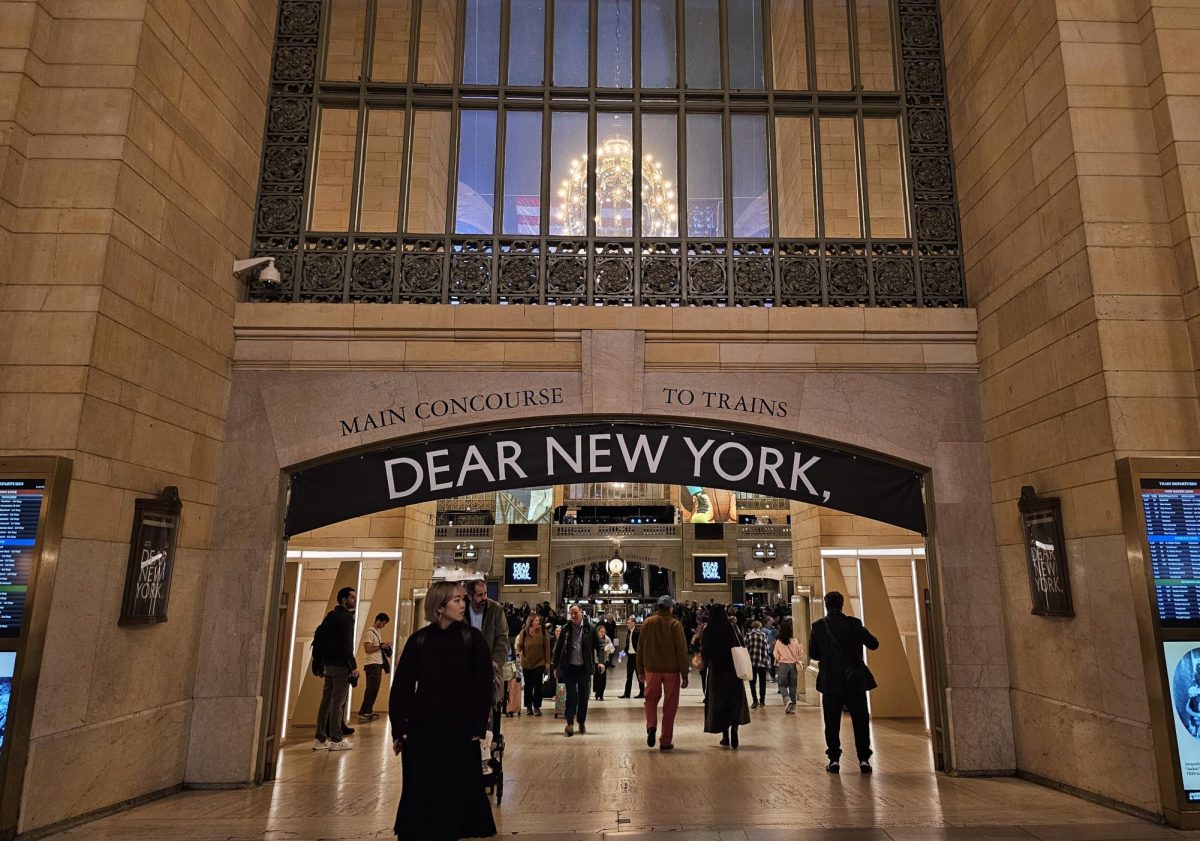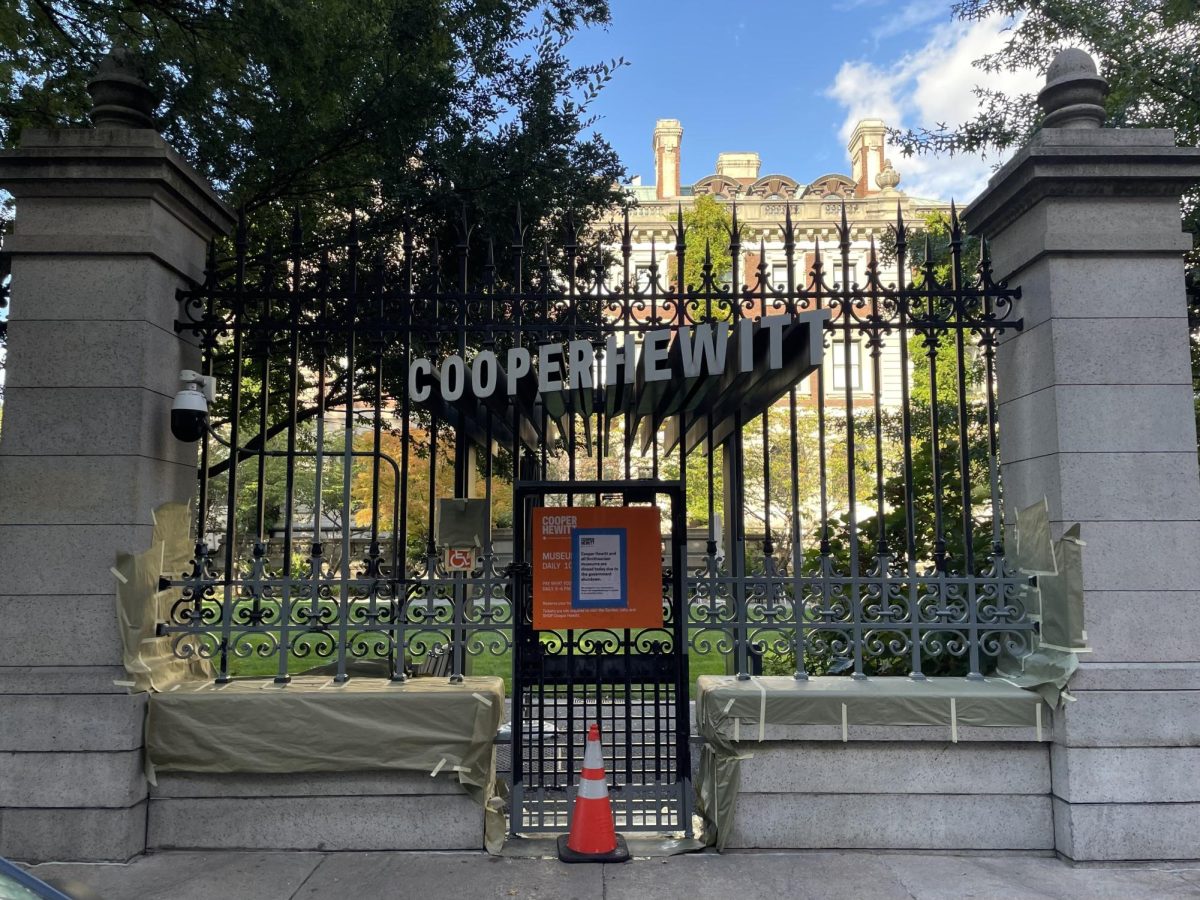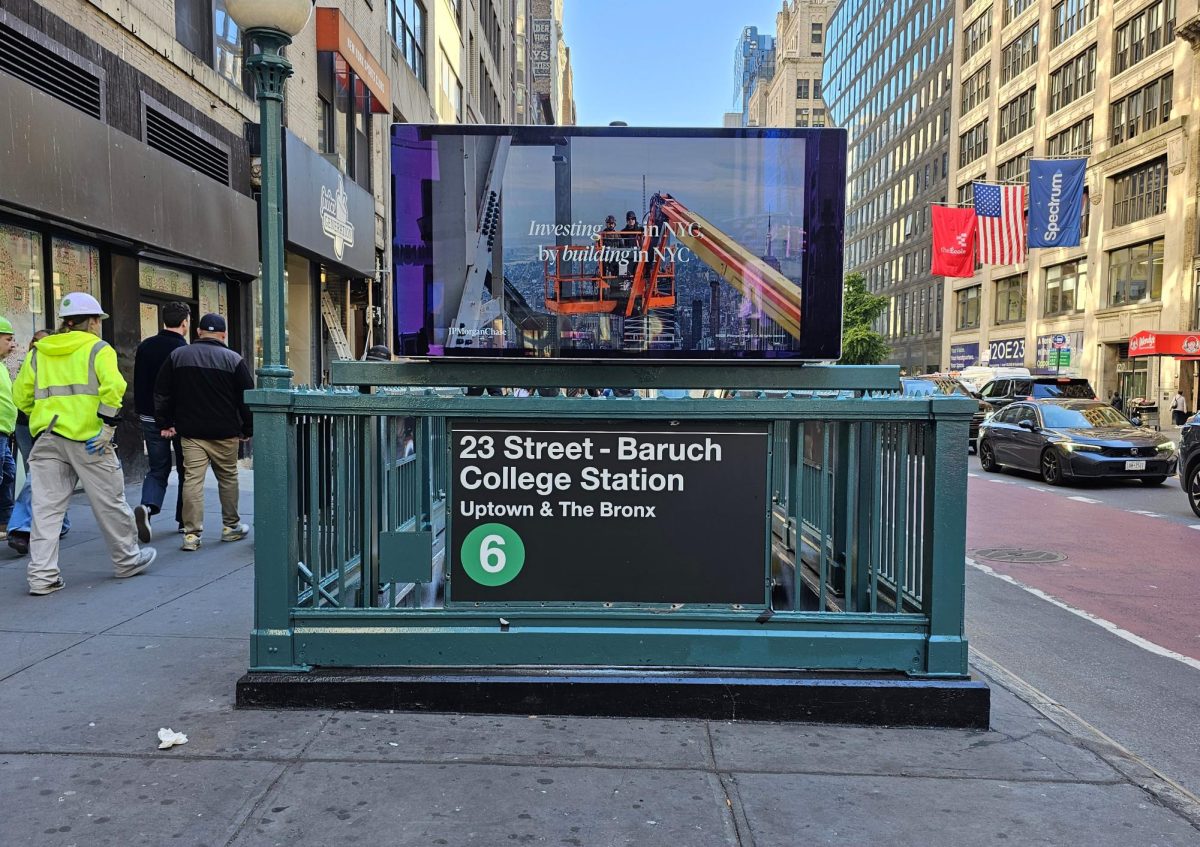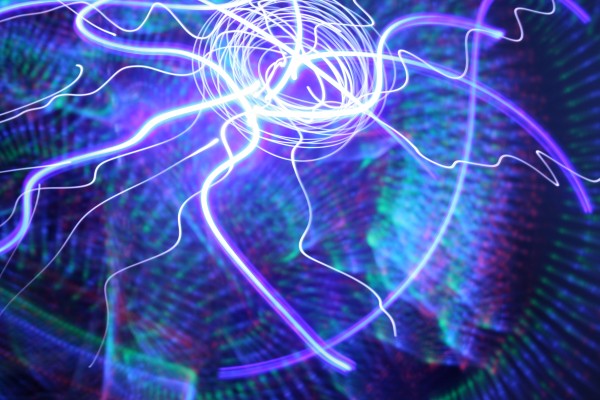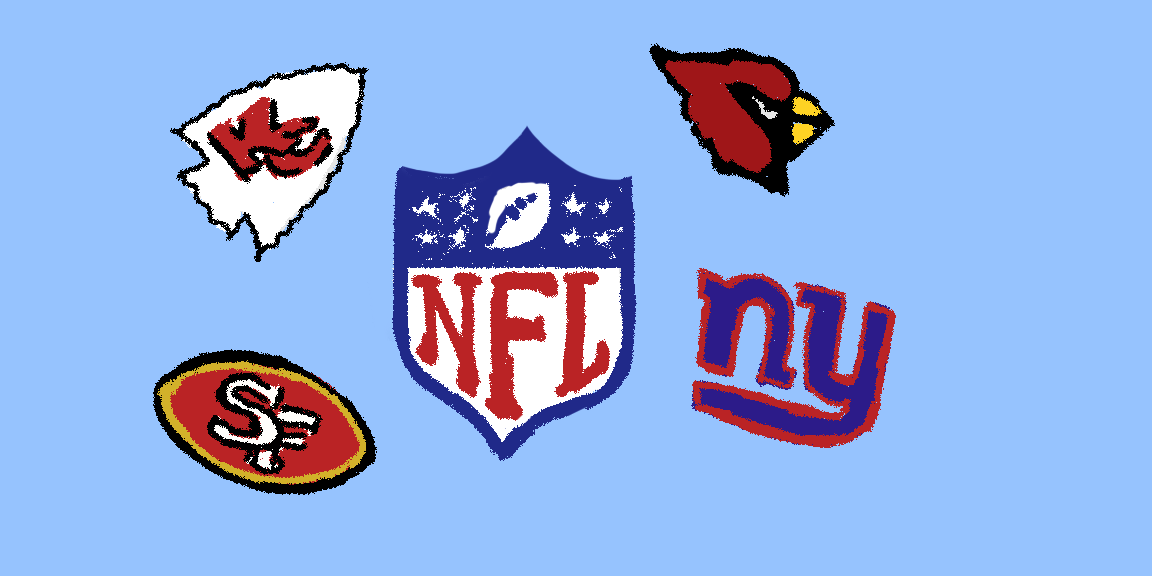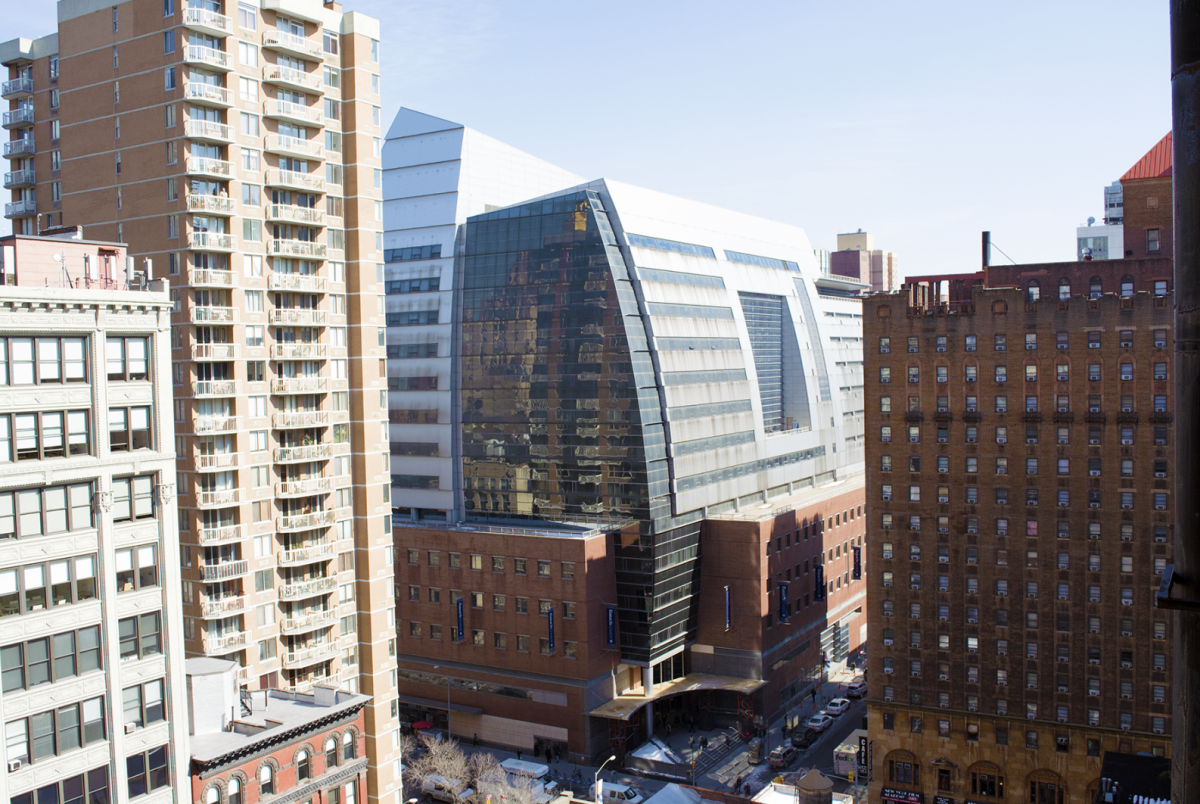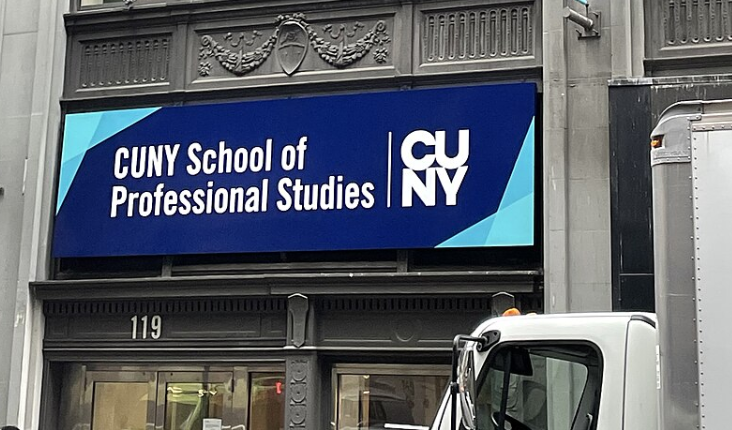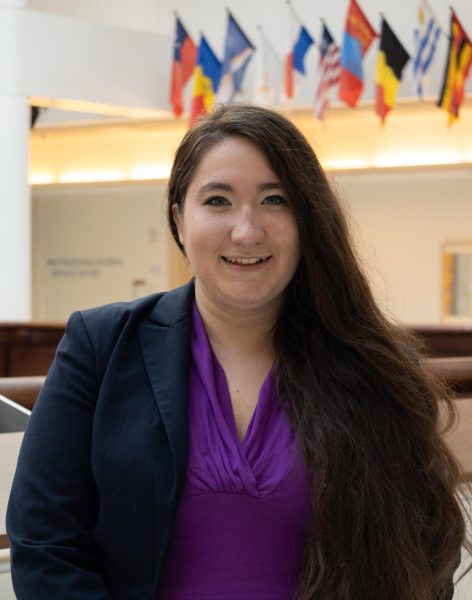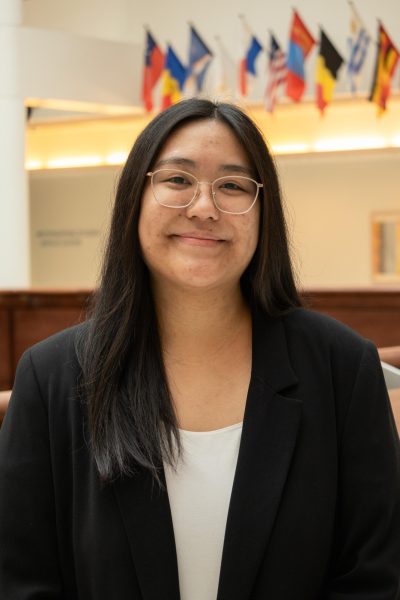The Mishkin Gallery curators hosted an after-hours tour of the current Anna Ostoya: J M Z exhibition on Nov. 4.
The exhibition includes 15 paintings by Polish-born artist Anna Ostoya, who was present during the tour. She shared further insight into the exhibit, highlighting her intention and composition.
Alaina Claire Feldman and Alexandra Tell provided a brief introduction, a walkthrough of the exhibit and analysis of several pieces.
Ostoya’s work features reinterpreted portraits of sketches she took of commuters along the J, M and Z subway lines in 2008.
The tour was intimate and conversational. It included moments of discussion between Ostoya and the exhibition attendees.
In an interview with The Ticker, Ostoya recalled sketching being the only way to take note of a person before phone cameras existed. It was a way to interpret the subjects as a means to feel closer to them.
“When looking at the sketches, I could nearly remember the person,” Ostoya said. “Like a button, or the way the person moves, or something very specific, my impression of that person.”
Ostoya recreated her sketches by using fragments and reproductions of her own work and found images. She explained how the pieces in the exhibit are about reappropriation, remodeling and revisiting the past.
“I think that’s the way how I approach art and maybe life, one can always rework something and frame it somehow differently,” Ostoya said.
She incorporated various forms of art, blending abstract and realism to capture both the tangible and intangible truths of her subjects.
“I’m following certain rules, and I think it’s important to have rules in order to be able to break them,” Ostoya said. “I’m painting things more realistically, photo-realistically, and then also trying other ways to capture the essence or the nature of what I’m seeing.”
She was also inspired by political theorist Chantal Mouffe and her essay “Politics and Passions: The Stakes of Democracy.”
Mouffe’s essay discussed criticisms of neoliberalism and the power of populism. Ostoya specifically referenced Mouffe’s views of treating people as adversaries to avoid violence.
Feldman invited students from several interdisciplinary courses at Baruch College to visit the gallery. Students participated in a character study assignment that used the paintings as a jumping-off point to write about issues they are concerned with. Through the exercise, students established their own interpretations of the paintings.
Ostoya, who was present for the class visits, expressed gratitude and shock at the accuracy of student interpretations.
Student interpretations often aligned with the ideas Ostoya had for the pieces.
“They would take these pieces and inhabit it with their own memories,” Ostoya said. “Although they would take the fragments and maybe explain them differently, the idea would be the same.”
The Baruch Honors program will visit the Mishkin Gallery on Nov. 21 to participate in a sketching session.
Tell said that the Mishkin Gallery aims to give students a forum to engage in introspection and conversation with the art.
“I think that one of our goals here is to help people think about how we look at things, at art, at the world and I think that there’s so much interpretive power,” Tell said. “I think just giving students the space to spend time looking at a single image and thinking about what does it look like? How do I talk about it? How does it make me feel? What does it make me think about?”
The exhibition is open until Dec. 13 and is free for all to visit.
Editor’s Note: A prior publication of this article misattributed the last quote. The article has been edited to correct the attribution.



